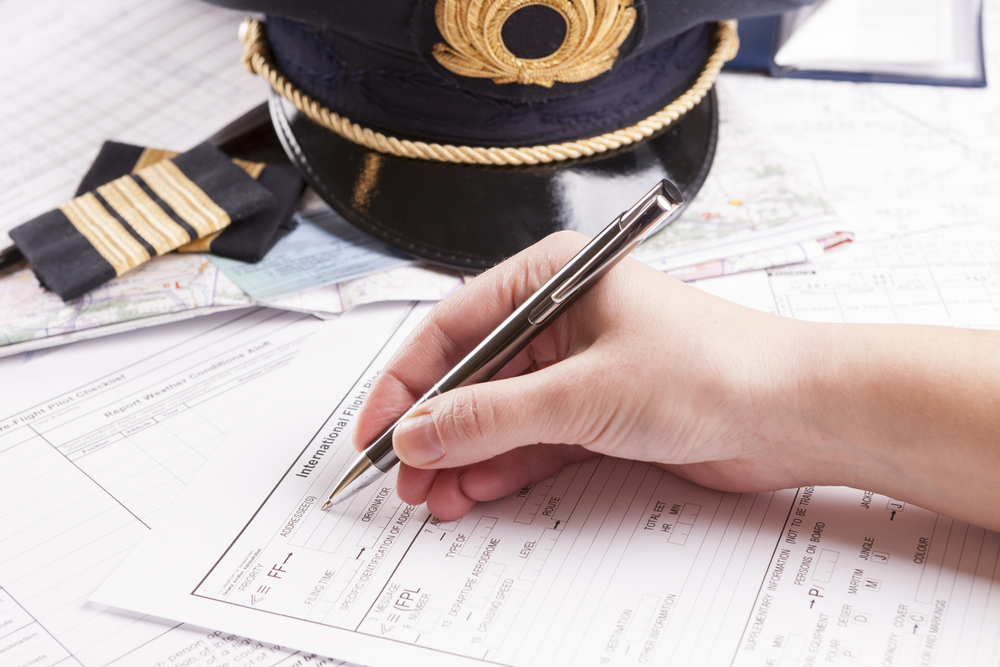For pilots, tracking flight hours is one of the, if not the most crucial, ways to establish experience in front of regulators and potential employers. After all, years of experience do not necessarily correlate with in-flight experience since flight time is a strictly defined term by regulators, including the Federal Aviation Administration (FAA) and the European Union Aviation Safety Agency (EASA).
Table of Contents
Defining Flight Hours
According to EASA’s ‘Easy Access Rules for Aircrew,’ last revised in August 2023, flight time when flying aircraft, touring motor gliders, or powered-lift aircraft, such as an electric vertical take-off and landing (eVTOL) aircraft, is “the total time from the moment an aircraft first moves for the purpose of taking off until the moment it finally comes to rest at the end of the flight.”
The United States Code of Federal Regulations (CFR), and by extension, the FAA’s, definition read that flight time, or flight hours, is “pilot time that commences when an aircraft moves under its own power for the purpose of flight and ends when the aircraft comes to rest after landing.”
As such, the two regulators share similarities when defining flight time. The International Civil Aviation Organization’s (ICAO) flight time definition is also almost identical, with the organization describing the term as “the total time from the moment an aeroplane first moves for the purpose of taking off until the moment it finally comes to rest at the end of the flight.”
While all three stakeholders have similar definitions for helicopters and gliders as well, the focus is on commercial aircraft and their regulations.
For student pilots, some other definitions are key as well. For example, EASA’s regulatory document outlined that ‘instrument flight time’ is “the time during which a pilot is controlling an aircraft in flight solely by reference to instruments,” while ‘solo flight time’ is “during which a student pilot is the sole occupant of the aircraft.”
The Importance Of Tracking Flight Hours
As stated before, tracking flight time – or flight hours – for pilots is key, which also applies to student pilots as well as experienced flight crew members who have been flying aircraft for years. For the former, it serves as proof of experience to obtain a pilot’s license.
According to a section of the US CFR about pilot logbooks, each pilot “must document and record the following time in a manner acceptable to the Administrator,” which includes training and aeronautical experience used to meet the requirements for a certificate, rating, or flight review, and aeronautical experience required for meeting the recent flight experience requirements.
The European regulator mandates that each pilot “keep a reliable record of the details of all flights flown in a form and manner established by the competent authority,” with each pilot logbook entry consisting of several key details: the day of the flight, the departure and arrival time, aircraft, and the time of flight, as well as the name or names of pilots who were in command and the number of landings during the day or night. All flight times should be entered in coordinated universal time (UTC). The entries are to be validated by the pilot-in-command (PIC).
| Mandated minimum flight hours for a commercial pilot’s license | |
| EASA | 200 (Commercial Pilot License, CPL), 1,500 (Airline Transport Pilot License, ATPL) |
| FAA | 250 (CPL), 1,500 (Airline Transport Pilot, ATP) |
Tracking Flight Time And Safety
However, flight time is not only tracked to prove a pilot’s experience. Pilots must do so to ensure they do not violate flight time limitations, which, for example, in the US, is capped at 500 hours in a quarter, 800 hours in two consecutive quarters, and 1,400 hours in a calendar year. Assignments are also limited, as showcased below:
| Duty | Normal duty time | Extension of flight time |
| Minimum rest immediately before duty | 10 Hours | 10 Hours |
| Duty period | Up to 14 hours | Up to 14 hours |
| Flight time for 1 pilot | Up to 8 hours | Exceeding 8 hours and up to 9 hours |
| Flight time for 2 pilots | Up to 10 hours | Exceeding 10 hours up to 12 hours |
| Minimum after duty rest | 10 hours | 12 hours |
| Minimum after duty rest period for multi-time zone flights | 14 hours | 18 hours |
However, these limitations only apply to commercial airlines and are not applicable to general aviation (GA) flights or fractional ownership operations. The flight time limits were enacted in order to ensure that fatigue, which has been a contributing factor to many incidents over the years.
So, if you want to begin or advance or career, or to ensure you do not exceed flight duty limitations as a pilot, make sure that you track your flight time to applicable regulations outlined by your country’s regulator.

